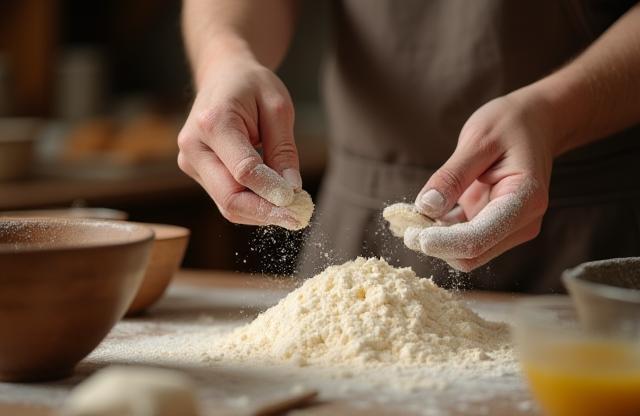
桜のこだわり
桜ベイクハウスは、ただ美味しいだけでなく、安心してお召し上がりいただける製品を提供することを哲学としています。私たちは、選び抜かれた最高品質の素材のみを使用しています。例えば、北海道産の新鮮な牛乳やバター、契約農家から届く旬のフルーツ、そして厳選された国産小麦。それぞれの素材が持つ自然な風味と栄養を最大限に引き出すため、伝統的な製法と革新的な技術を組み合わせています。
私たちのパティシエチームは、長年の経験を持つ職人たちです。彼らは日々、最高の味と美しい仕上がりを追求しています。特にオーダーメイドケーキにおいては、お客様一人ひとりの大切な想いを形にするため、デザインから味の構成、アレルギー対応に至るまで、細部にわたり丁寧なヒアリングと綿密な準備を行います。お客様の「こんなケーキがあったら…」という漠然としたイメージも、熟練のパティシエが魔法のように具体的な形に変えていきます。
「日本の四季を感じさせる繊細な味わいと、見た目の美しさ」これは桜ベイクハウスの譲れないこだわりです。春には桜や苺、夏にはマンゴーや桃、秋には栗やかぼちゃ、冬にはチョコレートやりんごといったように、その時期に最も美味しい素材を活かした限定商品も多数ご用意しております。一つ一つのパンやケーキには、作り手の深い情熱と、それを召し上がるお客様への感謝の気持ちが込められています。
店内は、木の温もりあふれる心地よい空間です。カフェスペースでは、焼き立てのパンの香りに包まれながら、こだわりのコーヒーと共にお気に入りの一品をお楽しみいただけます。私たちは、単なるパン屋さん、ケーキ屋さんではなく、お客様にとって心満たされる特別な時間を提供する場所でありたいと願っています。桜ベイクハウスでの体験が、皆様の日々にささやかな幸せと彩りをもたらすことを願っています。















